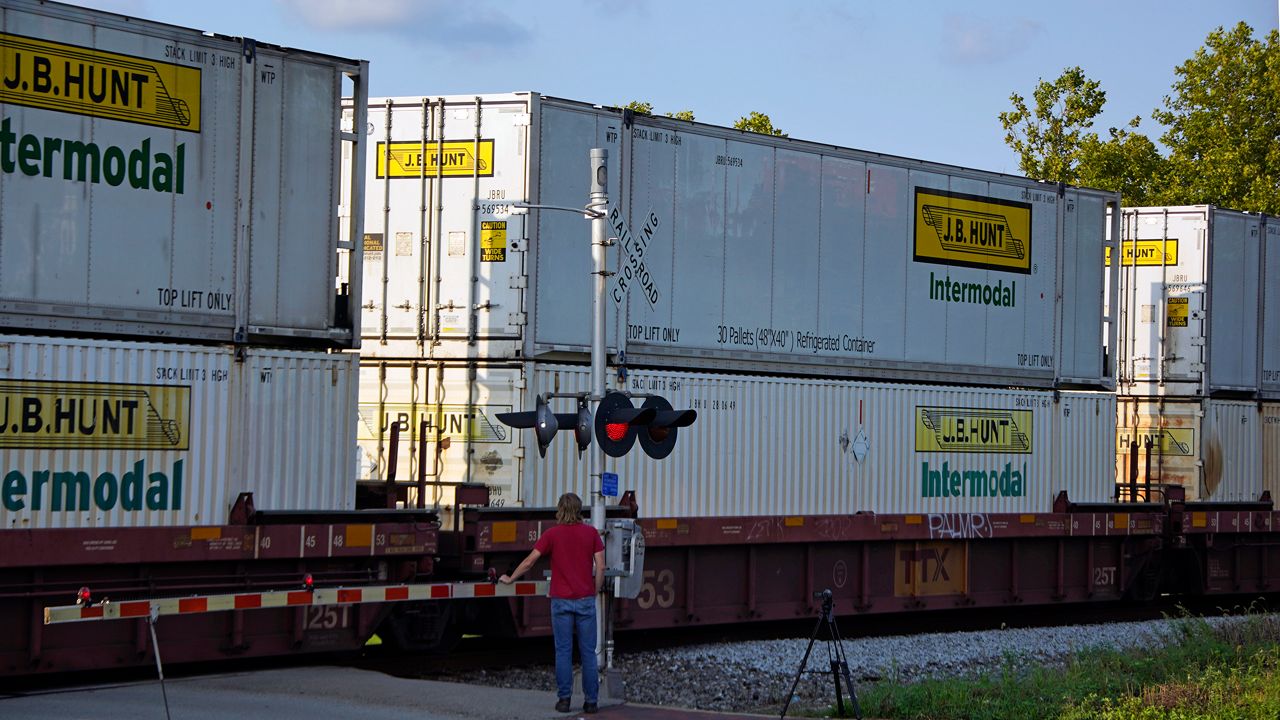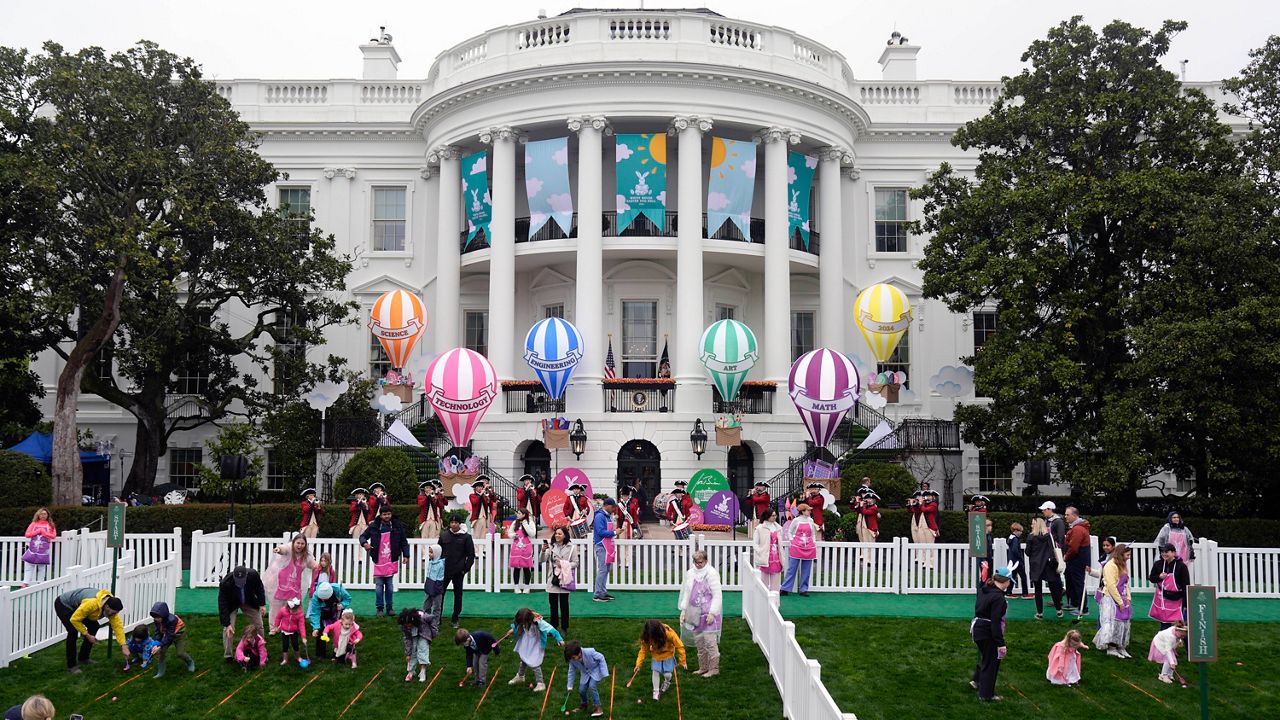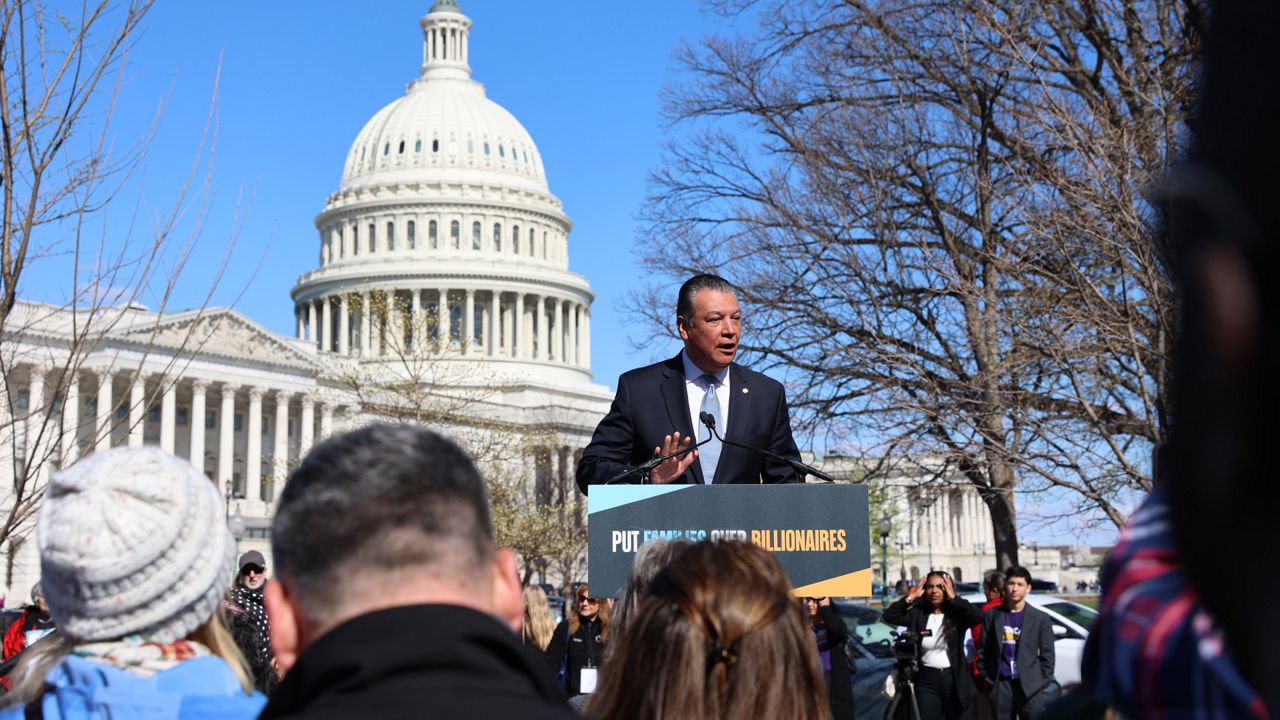The Biden-Harris administration announced Monday that it has awarded more than $570 million in funding for 63 projects in 32 states aimed at reducing train-vehicle collisions and blocked rail crossings.
The funding is intended to helping communities eliminate at-grade railroad crossings, places where rail tracks intersect with roads, the Department of Transportation said in a release. The grant program is the first of its kind, with funding for the projects coming from President Biden’s $1.2 trillion Bipartisan Infrastructure law.
“These projects are going to improve safety and make navigating these crossings more convenient, eliminating countless hours of wait time for commuters, first responders on their way to save lives and more,” said White House infrastructure coordinator Mitch Landrieu on a call Friday with reporters previewing the announcement.
Last year, there were more than 2,000 highway-rail crossing collisions nationwide, with more than 30,000 reports of blocked crossings submitted to the Federal Railroad Administration’s public complaint program, according to a release from the Transportation Department.
“Whenever I travel and so often, even here at D.C., when I hear from mayors or members of Congress again and again, we hear stories of people who find that their days are disrupted by unsafe at-grade rail crossings where rail lines cross roadways, creating inconvenience. quality of life issues or worse, because there are real safety concerns at many of these locations,” said Transportation Secretary Pete Buttigieg, before recounting “heartbreaking examples” of lives lost due to collisions and blocked crossings.
“Often citizens from these communities who are writing letters or making phone calls don't get much responsiveness on these concerns,” he continued, recounting his time as mayor of South Bend, Indiana. “I remember from my own time as mayor of a midsize city that it was often difficult to get a response on this. But what we're now able to do as an administration is put unprecedented funding toward addressing these railroad crossings.”
The first round of funding will address more than 400 at-grade crossings across the country – including projects in California, Florida, Missouri, New York, North Carolina, Ohio, Texas and Wisconsin – which the DOT says will improve safety and make it easier to bypass railroad tracks by adding grade separations, closing at-grade crossings and improving existing at-grade crossings.
The projects include a $36 million initiative to address railroad crossings in an area of Houston from which the FRA received more than 850 complaints of train blockages. Texas alone will receive funding for five projects totaling nearly $87 million.
“We are funding the construction of a 9,000-foot-long sealed rail corridor which will take care of four at-grade crossings,” Buttigieg said. “And we'll be constructing for underpasses so that people can move safely without delay.”
Buttigieg also touted a $7 million project in Fostoria, Ohio, a city 90 miles north of Columbus known for its railroad crossings. More than 100 freight trains pass through the city every day, and its convergence of two CSX lines and one Norfolk Southern line in downtown Fostoria is known as the “Iron Triangle.”
“In the community of Fostoria, Ohio, there is a neighborhood known as the ‘Iron Triangle,’ because it is bounded by railroad tracks on three sides and then hemmed in by farmland on the fourth,” Buttigieg said. “At times when the trains are on these tracks and over these crossings, the community is completely cut off, with no way to drive in or out. We are building a bridge that will allow residents and first responders to travel safely and reliably around the area.”
Other noteworthy projects include a $15 million sealed corridor project in Broward County, Fla., a $2 million study aimed at eliminating three at-grade crossings in Kansas City, an $11 million project supporting final design and installations at a crossing at the New York State Fair Grounds in Syracuse, and a nearly $10 million project in Eau Claire, Wisconsin, to replace two at-grade crossings with overpasses which will connect to the Chippewa River bike and pedestrian trail.
The Transportation Department said that additional funding will be made available annually for the next four years. Meanwhile, project selections for other grants, notably those aimed at improving freight rail safety and efficiency, expanding the passenger rail network and bolstering supply chains, will be announced in the coming months, the agency noted.








